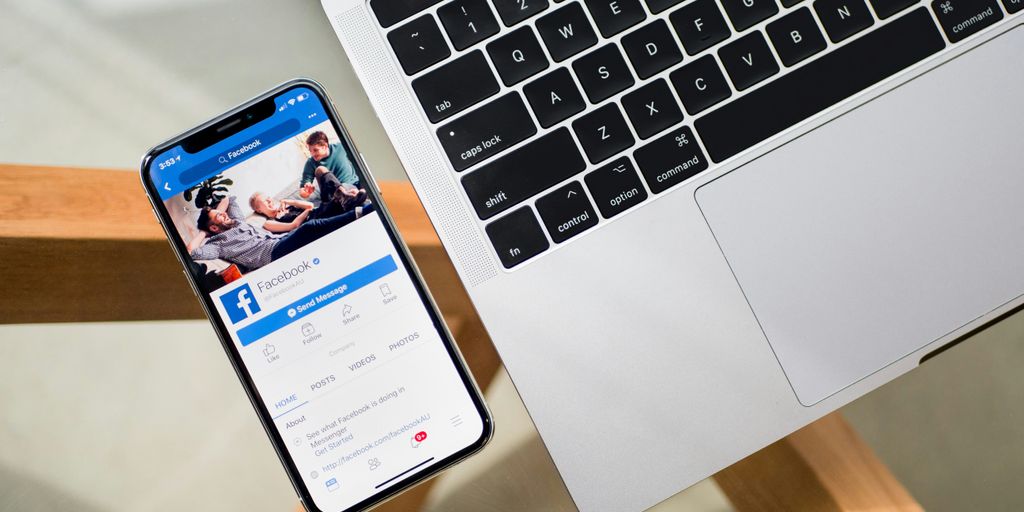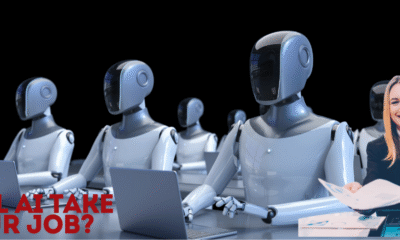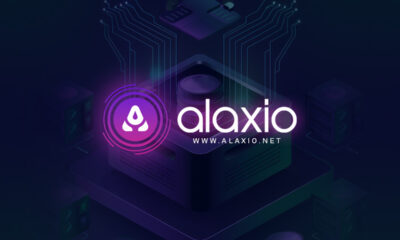News
Exploring MSNBC YouTube: The Impact of Digital News on American Politics

In recent years, digital news platforms like MSNBC YouTube have transformed how Americans consume news and engage with politics. This shift has not only changed the landscape of media consumption but also influenced public opinion and political discourse. As more viewers turn to online sources for their news, the implications for political engagement and trust in media are profound. This article explores the role of MSNBC YouTube in shaping political conversations and the broader impact of digital news on American politics.
Key Takeaways
- Digital news consumption is reshaping the media landscape, moving away from traditional outlets.
- MSNBC YouTube fosters direct engagement with audiences, influencing their political views.
- Partisan news can contribute to political polarization and affect trust in media sources.
- The rise of user-generated content is changing how news is defined and consumed.
- Future news trends indicate a growing reliance on digital platforms and challenges for traditional journalism.
The Rise of Digital News Consumption

Changing Media Landscape
The way we get our news has totally changed. It used to be all about newspapers and the evening news on TV. Now? Everyone’s glued to their phones. This shift has really shaken up the traditional media landscape. Think about it: news cycles are faster, and there are way more sources to choose from. It’s a wild west out there. People are replacing their time spent with print and television with websites and social media. One woman mentioned she used to buy print magazines but has "really adopted fully media on my phone".
Audience-Centric News
News isn’t just what journalists say it is anymore. It’s what we decide it is. That’s what some call an "audience turn". Regular folks are now shaping the news cycle by sharing articles, videos, and opinions online. It’s less about gatekeepers and more about what grabs our attention. One woman in her 40s thinks a clip of Donald Trump at an event IS NOT news “in and of itself,” though she thinks “it could be made into a news story.”
Impact of Social Media
Social media is a huge part of how we consume news. It’s quick, it’s easy, and it’s everywhere. But it also means we’re getting news filtered through algorithms and echo chambers. It’s a double-edged sword. On one hand, we can stay informed about current political events in real-time. On the other, it can be hard to tell what’s real and what’s not. Social media content was considered by some participants to be less trustworthy – and thus less “news-like”.
MSNBC YouTube’s Role in Political Discourse
Engagement with Viewers
MSNBC’s YouTube channel isn’t just a place to dump TV clips; it’s a platform for direct engagement. They actually try to talk with viewers, not just at them. This includes responding to comments, hosting Q&As, and even adjusting content based on viewer feedback. It’s like they’re trying to build a community, which is pretty smart. It’s a far cry from the old days of just broadcasting news. This approach helps restore dignity to political disagreements.
Influence on Political Opinions
Okay, let’s be real: MSNBC isn’t exactly known for its unbiased reporting. The channel definitely caters to a specific audience, and its YouTube content reflects that. You’re more likely to see stories framed in a way that aligns with liberal viewpoints. This can reinforce existing beliefs or even sway opinions, especially for viewers who aren’t exposed to a wide range of perspectives. It’s the same thing with FOX News, just on the other side of the spectrum. The coverage of campaigns is increasingly negative.
Content Diversity
While MSNBC YouTube has a clear political leaning, they do offer a range of content. It’s not all just talking heads arguing about the latest Trump tweet. You can find interviews, documentaries, and explainers on various policy issues. They also feature different hosts with different styles, like Jen Psaki, which keeps things somewhat fresh. It’s not exactly a neutral source, but they do try to offer more than just one type of programming. They are leaning into opinion coverage.
Polarization and Trust in News Media
Effects of Partisan News
It’s hard to ignore how partisan news sources are changing the game. People are increasingly drawn to news that confirms what they already believe, which just makes the divide in our country even bigger. You see it everywhere – folks on one side tuning out anything that doesn’t fit their narrative, and the other side doing the same. It’s like everyone’s living in their own little echo chamber. This can lead to some serious misunderstandings and makes finding common ground almost impossible. It’s not just about disagreeing anymore; it’s about not even hearing each other out. The rise of digital content creators is also changing how people get their news.
Viewer Trust Dynamics
Trust in the news is a tricky thing these days. It feels like everyone’s got their own definition of what’s "real" news. Some people trust mainstream outlets, others swear by independent blogs, and then there’s a whole group that only gets their news from social media. And honestly, who can blame them for being skeptical? With so much information flying around, it’s tough to know what to believe. Political leanings play a huge role too; if a news source doesn’t align with your views, you’re probably less likely to trust it.
Comparative Analysis of News Sources
Comparing different news sources is more important than ever. You’ve got your traditional newspapers, cable news channels, and then a whole world of online platforms. Each one has its own angle, its own biases, and its own way of presenting information. It’s up to us, the viewers, to do our homework and figure out what’s really going on. I try to look at a story from a few different angles before I make up my mind. It’s time-consuming, but it’s worth it. I think it’s important to consider trust in news when choosing your sources.
Here’s a quick look at how different sources might be perceived:
| Source | Perceived Bias | Trust Level (General) |
|---|---|---|
| Cable News (A) | Right-leaning | Medium-Low |
| Cable News (B) | Left-leaning | Medium-Low |
| National Public Radio | Neutral to Left | Medium-High |
| Online Blog (X) | Varies | Low |
The Democratization of News
Shift from Gatekeepers to Audiences
It’s wild how much the news has changed, right? Used to be, a few big companies decided what we saw. Now? Anyone with a phone can report something. This shift has really changed who controls the news. It’s not just the big networks anymore. Regular people are shaping the narrative, which is both cool and a little scary. Think about it: your neighbor could break a story before CNN does. It’s all about speed and access now. The old gatekeepers are still around, but their power isn’t what it used to be. People are getting their news from everywhere, and that changes everything.
User-Generated Content
User-generated content (UGC) is a huge part of this shift. It’s not just about reading articles anymore. It’s about seeing videos, reading tweets, and getting firsthand accounts from people who are actually there. This stuff can be super powerful, but it also comes with risks. How do you know what’s real and what’s fake? It’s tough. But the upside is that you get perspectives you’d never see in traditional media. For example, during a protest, you might see live streams from the ground instead of waiting for a news crew to show up. It’s raw, it’s unfiltered, and it’s changing the game. Here’s a quick breakdown:
- Direct perspectives: See events as they happen.
- Diverse voices: Hear from people often ignored by mainstream media.
- Authenticity challenges: Verify the source and accuracy.
Impact on Traditional Journalism
So, what does all this mean for traditional journalism? Well, they’ve had to adapt. News outlets are using social media more, trying to engage with their audience in new ways. They’re also facing more competition than ever before. It’s not enough to just report the news; they have to be fast, accurate, and engaging. Some are doing a great job, others are struggling. The rise of video streaming platforms has also changed how people consume news. It’s a tough time for the old guard, but it’s also an opportunity to innovate and find new ways to connect with people. The key is trust. If traditional outlets can maintain their credibility, they’ll still have a place in this new landscape. But they need to earn it, every single day. The definition of trust in news is changing, and they need to keep up.
The Future of News Consumption
It’s wild to think about how much news has changed, even in the last few years. It feels like every day there’s a new platform or a different way to get your information. So, what’s next? Let’s try to figure it out.
Trends in Digital News
Digital news is moving fast. Personalization is a big deal. People want news that matters to them, and they want it now. We’re seeing more short-form video, interactive graphics, and even AI-generated summaries. It’s all about getting the info you need, how you want it. The Kamala Harris’s speech at the Democratic National Convention is a good example of how digital platforms amplify key political moments.
Here’s a quick look at some trends:
- Mobile-First: News designed for phones.
- Personalized Feeds: Algorithms showing you what you want to see.
- Interactive Content: Quizzes, polls, and live Q&As.
Emerging Platforms
YouTube is huge, but it’s not the only game in town. TikTok, Instagram, and even newer platforms are becoming news sources for a lot of people. These platforms are all about visuals and quick hits, which can be good and bad. On one hand, it makes news accessible. On the other, it can lead to misinformation spreading faster than ever. It’s a challenge for sure.
Challenges for News Outlets
News outlets are facing some serious problems. Trust is down, and it’s harder to make money when everyone expects news to be free. They’re trying to adapt by:
- Focusing on Subscriptions: Getting people to pay for quality content.
- Diversifying Revenue: Trying new things like events and merchandise.
- Fighting Misinformation: Working to be accurate and reliable.
It’s a tough time, but there’s also a lot of opportunity for news outlets that can figure out how to connect with audiences in new and meaningful ways.
MSNBC YouTube and Political Engagement
Mobilizing Young Voters
MSNBC’s YouTube channel has become a tool for reaching younger voters. It’s not just about putting clips online; it’s about crafting content that speaks to the issues young people care about. Short, digestible videos and explainers on complex topics are key. Think about it: a 20-minute policy discussion might lose someone, but a 3-minute breakdown with engaging visuals? That’s more likely to grab their attention. It’s about meeting them where they are, which is often scrolling through YouTube on their phones.
Interactive Content
One thing that sets MSNBC’s YouTube apart is the interactive element. It’s not just a one-way broadcast. They use features like polls, Q&As, and live chats to get viewers involved. This makes people feel like they’re part of the conversation, not just passively watching. For example:
- Live Q&As with political analysts
- Polls asking viewers their opinions on current events
- Comment sections where viewers can discuss the issues
This kind of engagement can really enhance the travel experience and make the news feel more relevant.
Community Building
MSNBC’s YouTube channel is also fostering a sense of community. By creating a space where people can share their thoughts and opinions, they’re building a loyal following. This is important because people are more likely to trust news sources they feel connected to. It’s like having a virtual town hall where people can come together to discuss the issues that matter to them. This sense of community can translate into real-world political action, like volunteering for campaigns or opposing the Republican Party.
Analyzing Viewer Behavior on YouTube

Content Preferences
Okay, so when we talk about what people actually watch on MSNBC’s YouTube channel, it’s more than just guessing. It’s about digging into the data. What topics get the most views? Are people more interested in interviews, news clips, or panel discussions? It’s not always what you expect. For example, a constitutional crisis video might get way more traction than a straightforward news report. We can break it down by category, length, and even the guests featured.
Viewing Patterns
How do people actually use the MSNBC YouTube channel? Are they watching videos all the way through, or are they clicking away after a few minutes? Do they watch at certain times of the day or week? This stuff matters! We can look at metrics like average view duration, audience retention, and even traffic sources to get a clearer picture. Are viewers finding videos through search, suggested videos, or external links? It’s like detective work, but with data. I saw something about how they analyzed how they pulled people in with viral videos of cats and dogs.
Feedback Mechanisms
YouTube isn’t just a one-way street. Viewers can leave comments, like videos, and even participate in polls. All of this is valuable feedback for MSNBC. Are people agreeing with the content? Are they asking questions? Are they starting debates in the comments section? This feedback can help shape future content and improve engagement. It’s also important to see what people are saying on other platforms, like Twitter or Facebook, about MSNBC’s YouTube videos. Someone will correct me in the comments, and I was like, oh my.
Here’s a simple table showing potential feedback metrics:
| Metric | Description |
|---|---|
| Likes/Dislikes | Indicates overall sentiment |
| Comments | Provides qualitative feedback and discussion |
| Shares | Shows how widely the video is being spread |
Final Thoughts on MSNBC YouTube and Digital News
In wrapping this up, it’s clear that MSNBC’s YouTube presence is more than just another channel for news. It’s a reflection of how we consume information today. People are shifting away from traditional media, and platforms like YouTube are stepping in to fill that gap. This change is reshaping how we engage with politics. Viewers are not just passive recipients anymore; they’re actively choosing what to watch and who to trust. As we move forward, it’ll be interesting to see how this impacts political discourse in America. Will it lead to more informed citizens, or just deepen the divides? Only time will tell.
Frequently Asked Questions
What is MSNBC YouTube?
MSNBC YouTube is the online video channel of MSNBC, where you can watch news clips, interviews, and discussions about politics and current events.
How does digital news affect American politics?
Digital news, like that from MSNBC on YouTube, helps people stay informed and can shape their opinions about political issues.
Why do people trust MSNBC YouTube?
Many viewers trust MSNBC YouTube because they believe it provides reliable information and covers important news stories.
How does MSNBC YouTube engage with its audience?
MSNBC YouTube engages viewers by encouraging comments, sharing videos on social media, and hosting live discussions.
What role does social media play in news consumption?
Social media allows people to share news quickly and widely, making it easier for viewers to find and discuss current events.
What challenges does MSNBC YouTube face?
MSNBC YouTube faces challenges like competition from other news sources, misinformation, and the need to keep viewers engaged.
-

 Home and Garden2 days ago
Home and Garden2 days agoTransform Your Space: A Guide to Minimalist House Interior Design in 2025
-

 Home & Family3 days ago
Home & Family3 days ago10 Essential Cleaning Hacks for Bathroom Surfaces You Need to Try
-

 Innovations5 days ago
Innovations5 days agoWill AI Take Your Job? The Truth About Automation and Employment
-

 Press Release6 days ago
Press Release6 days agoWhat Makes Alaxio Different from Every Other Altcoin?
-

 Crime3 days ago
Crime3 days agoExploring the Most Anticipated New True Crime Documentaries of 2025
-

 Health & Fitness2 days ago
Health & Fitness2 days agoDiscover the Best Multivitamin for Women Over 40: A Comprehensive Guide to Optimal Health
-

 Health & Fitness3 days ago
Health & Fitness3 days agoDiscovering the Best Multivitamin for Women Over 40: Essential Nutrients for Optimal Health
-

 Business3 days ago
Business3 days agoMaximize Your Earnings with American Express High Yield Savings Accounts in 2025


















